In this post I’ll mainly focus on Salzburg’s role as a musical metropolis, or in other words, a “stage of the world“. The highlights will of course be the birthplace and residence of Wolfgang Amadeus Mozart and the Festival Halls, where the world-famous Salzburg Festival founded by Max Reinhardt together with a group of intellectuals and artists is held every summer. If you have read my previous post about the Hohensalzburg Fortress and DomQuartier (including the cathedral, Residenz, St. Peter’s Abbey and their relevant museums and galleries), please click here to skip the general introduction of Salzburg and jump directly to the main content of this one. If not, the following two chapters will, 1) talk about Salzburg as the shooting location for the external scenes of the American musical drama film “The Sound of Music“, 2) explain how the city meets 3 out of the 10 Selection Criteria to be inscribed in the UNESCO World Heritage list, 3) provide you with some practical information such as the Salzburg Card, which gives you free access to all the attractions in the city and public transport and 4) introduce to you the general structure of my fours posts about Salzburg. Now let’s embark on our journey and get to know this charming city.
As the UNESCO comments:
Salzburg has managed to preserve an extraordinarily rich urban fabric, developed over the period from the Middle Ages to the 19th century when it was a city-state ruled by a prince-archbishop. Its Flamboyant Gothic art attracted many craftsmen and artists before the city became even better known through the work of the Italian architects Vincenzo Scamozzi and Santini Solari, to whom the centre of Salzburg owes much of its Baroque appearance. This meeting-point of northern and southern Europe perhaps sparked the genius of Salzburg’s most famous son, Wolfgang Amadeus Mozart, whose name has been associated with the city ever since.
萨尔茨堡市历史中心: 当萨尔茨堡还是大主教统治下的一个城邦的时候,就一直在尽力保护那些建于中世纪至19世纪的珍贵城市建筑。在她广为人知之前就以其火焰样的哥特式艺术吸引了大批工匠和艺术家。后来,意大利建筑师文森佐·斯卡莫齐(Vincenzo Scamozzi)和山迪尼·索拉里(Santini Solari)为这里带来了大量巴洛克风格的建筑,通过他们的作品,这个城市也得到了更大的知名度。也许正是这种南北欧艺术的交融才成就了萨尔茨堡最著名的天才——乌夫冈·阿马戴乌斯·莫扎特(Wolfgang Amadeus Mozart)。从那时起至今, 他的名字便一直和这个城市联系在一起。
1. Introduction to the city
1.1 The Sound of Music
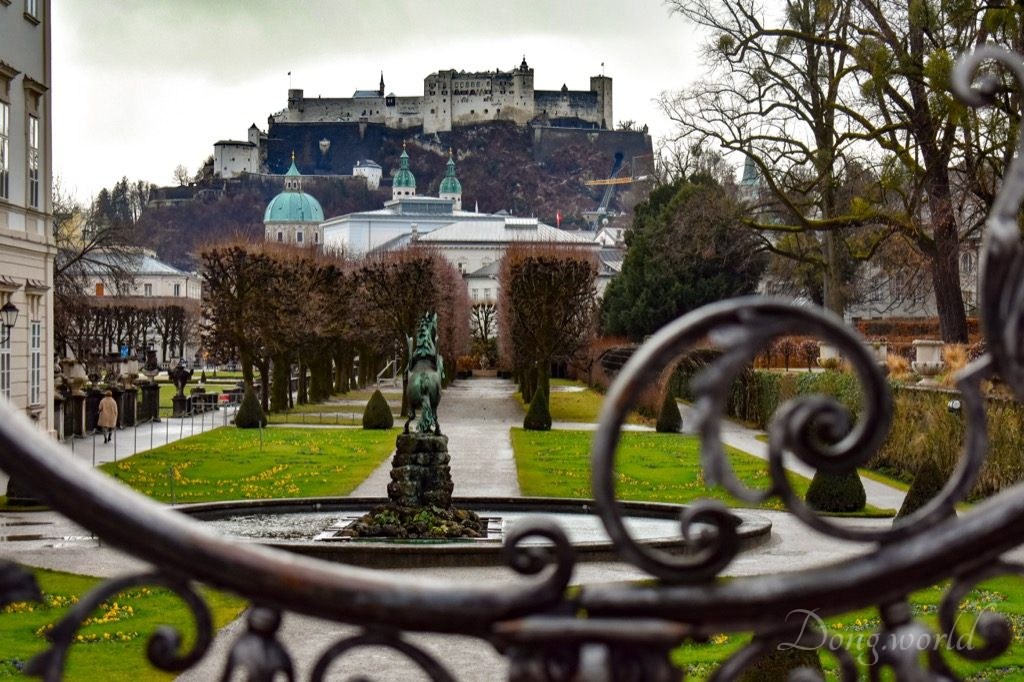
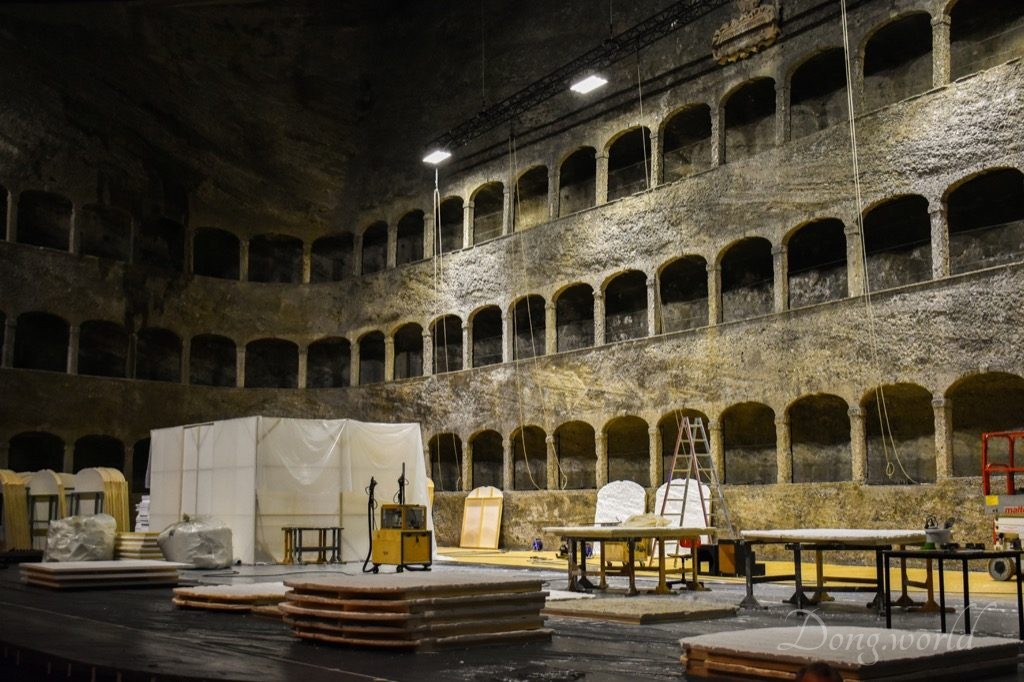
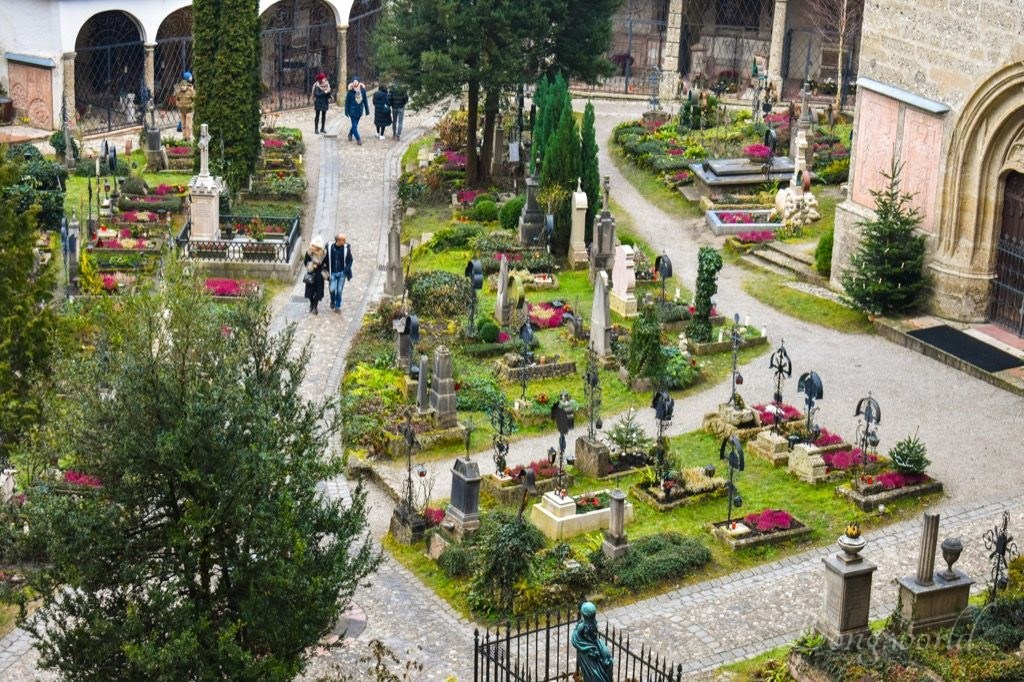

What do you first think of when someone mentions Salzburg? For me, Mozart of course, and then it’s the movie “The Sound of Music“, a 1965 American musical drama film produced and directed by Robert Wise, and starring Julie Andrews. Being a huge success, it received five Academy Awards, including Best Picture and Best Director, and in 2001, the United States Library of Congress selected it for preservation in the National Film Registry, finding it “culturally, historically, or aesthetically significant”. I’m not sure how popular it is in your country, but in China, I can say that once you sing “Do-Re-Mi“, “The Lonely Goatherd”, “My Favorite Things”, “Edelweiss” and “So Long, Farewell”, most of the people around my age will recognize from which movie they are immediately. The film was so popular that I remember I watched it during classes (played by the teacher) in primary school, middle school and high school and my classmates and I even performed part of it in the primary school graduation ceremony. As I learnt from the info sheets provided by the tourism office, “The Sound of Music” has been seen by every one out of three Japanese tourists and is one of the main reasons for three quarters of American tourists to visit Salzburg.
Having said so much about the movie, what does it have to do with Salzburg then? In fact, the general plot is based on a real story (with certain variations) of the von Trapp family who lived here and the external scenes of the movie was shot in this city and the surrounding region. Though more than 50 years has passed, I still recognized many places that I saw in the movie. For example, the Mirabell Palace and Garden (as you can see in the first picture above), where Maria and the children were dancing and finished the song “Do-Re-Mi” at the background of the rooftops, towers and the fortress, the Felsenreitschule (as you can see in the second picture above), where the von Trapp family win first prize at the end of the film, St. Peter’s cemetery (as you can see in the third picture above), where the family hides from the Nazis, Schloss Leopoldskron, the house where the family lived in the movie, the Nonnberg Convent (as you can see in the fourth picture above), where the young Maria was a novice, the Residenzplatz Square and Residence Fountain, the Sound of Music Pavillon close to Schloss Hellbrunn and so on. I even found the narrow streets, houses and various old shops familiar and they brought back my memory not only of the movie but also of the school time with my classmates and friends, whom I meet rarely nowadays… I recommend you obtaining a map from the tourism office called “Salzburg – Die Bühne der Welt” and on it, you can see attractions marked with musical notes, which indicate the locations for shooting the movie. In my this and the following posts, I’ll also remind you of the scenes when I talk about relevant attractions. If you wanna know more about the shooting locations please click here and if you wanna know about guided tours of this particular theme, please click here.
1.2 UNESCO World Heritage
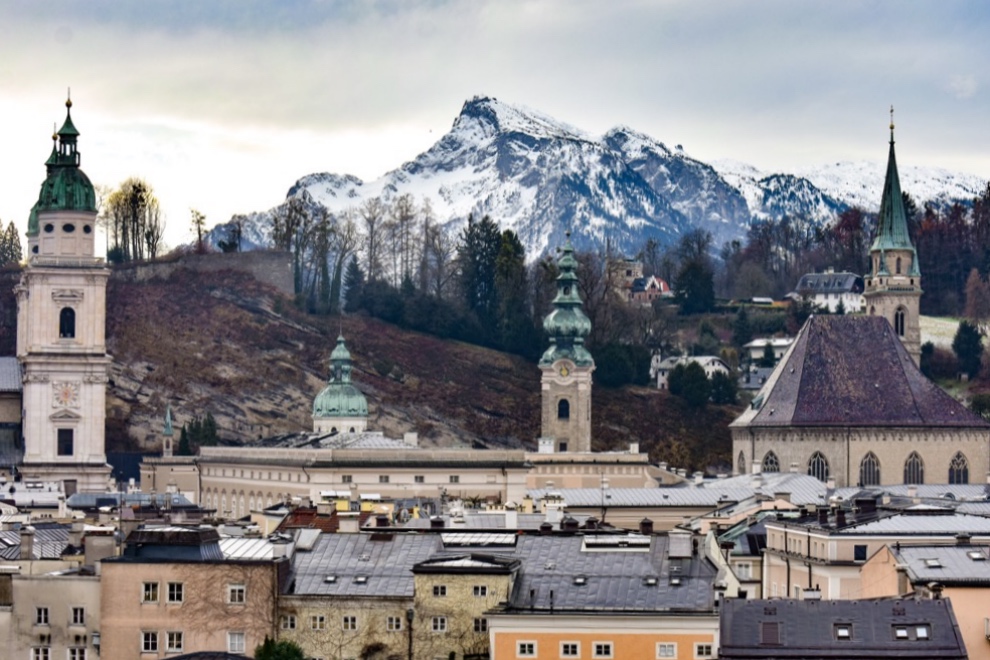
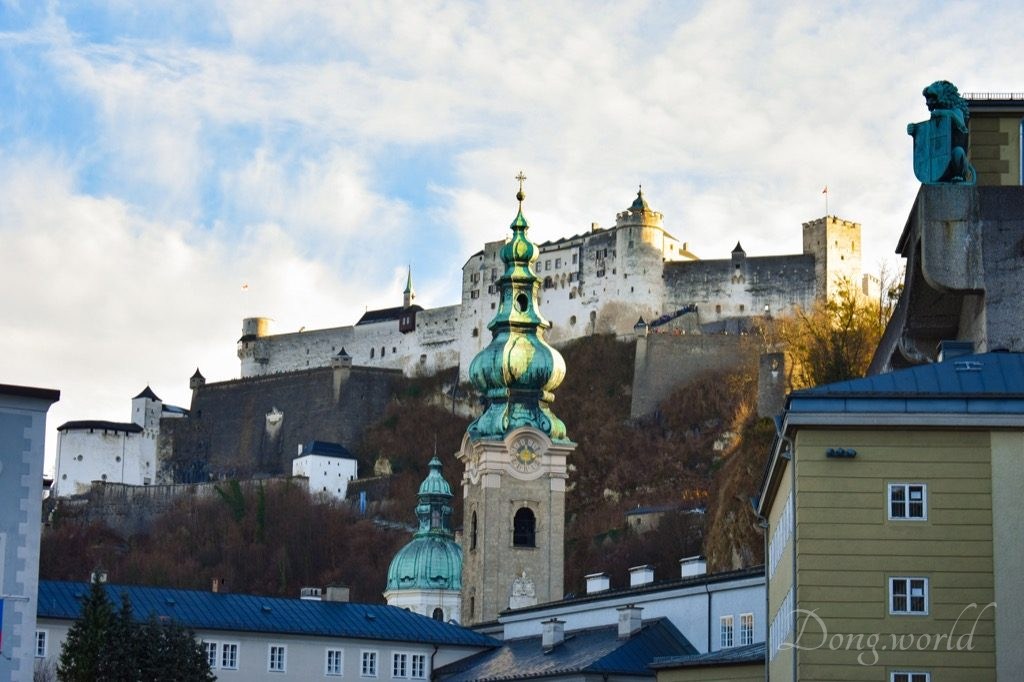
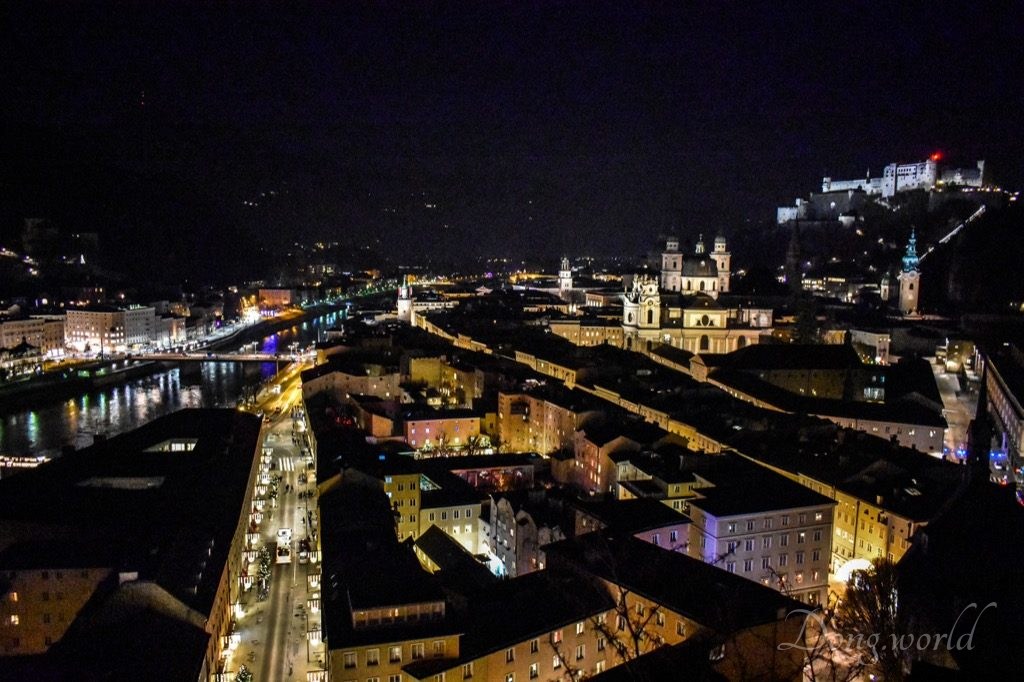
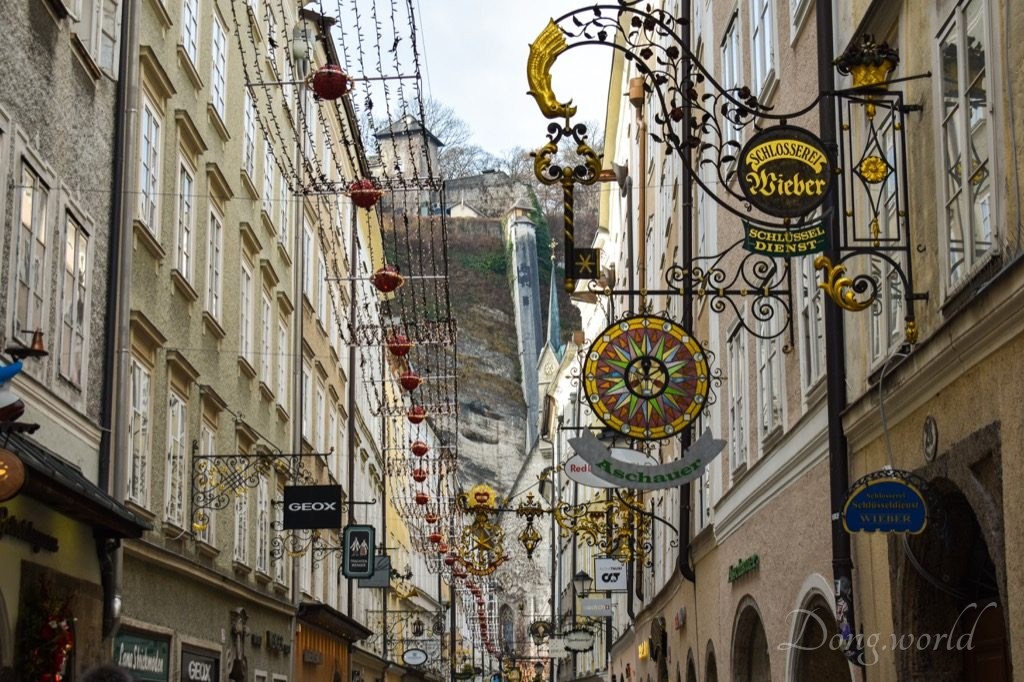
Considering I’m recently focusing on the visiting and writing about the UNESCO World Heritage sites in Europe, I decided to pay a visit to Salzburg during its 20-year anniversary of being in the UNESCO World Heritage list (1997-2017). In 1997, UNESCO officially recognized the historical center of Salzburg as a World Heritage site because of its unique cityscape influenced by both German and Italian cultures, its architecture shaped by the prince-archbishops of the former days and its significant role as a musical metropolis and the birthplace of Wolfgang Amadeus Mozart. Though currently a modern city, its distinctive architectural features have been well preserved.
Before visiting the city, I had no idea that it once served as the seat of ecclesiastical power in the heart of Europe. I guess that’s why there are so many churches and monasteries in the old town. Being a busy merchant town in the Middle Ages and the former residence of the prince-archbishops, Salzburg has an iconic ensemble of buildings dating back to different periods of time. The thriving cultural exchange between the south and north of Europe, in particular the architects and artists invited here from Italy, made the city one of the most beautiful and unique in the whole of Europe. Besides its architectural beauty, how can we ignore its role as a musical and cultural metropolis? It is well-known that Wolfgang Amadeus Mozart was born in Getreidegasse 9 and over 350 of his most beautiful pieces were written here, but do not forget that it is also here that the theatre director and producer founded the famous Salzburg Festival. Perhaps this is one of the reasons why “The Sound of Music” was chosen to be based on a real Salzburg family and filmed here.
The historical center of Salzburg is accepted and protected as a UNESCO World Heritage site based on three out of the ten Selection Criteria. The fact that it was the former residence of the prince-archbishops meets criterion ii: “to exhibit an important interchange of human values, over a span of time or within a cultural area of the world, on developments in architecture or technology, monumental arts, town-planning or landscape design”. Its authentic, well-preserved and unique architectural ensemble in the city center meets criterion iv: “to be an outstanding example of a type of building, architectural or technological ensemble or landscape which illustrates (a) significant stage(s) in human history”. Last but not least, its development in music and most famous son Mozart meet criterion vi: “to be directly or tangibly associated with events or living traditions, with ideas, or with beliefs, with artistic and literary works of outstanding universal significance”. I’ll elaborate a bit more on these three criteria in the following sections and organize my four posts about Salzburg according to them. However, I’d like to remind you that the three aspects are interconnected and it’s impossible to talk about any one of them in a strictly isolated manner without mentioning the other two.
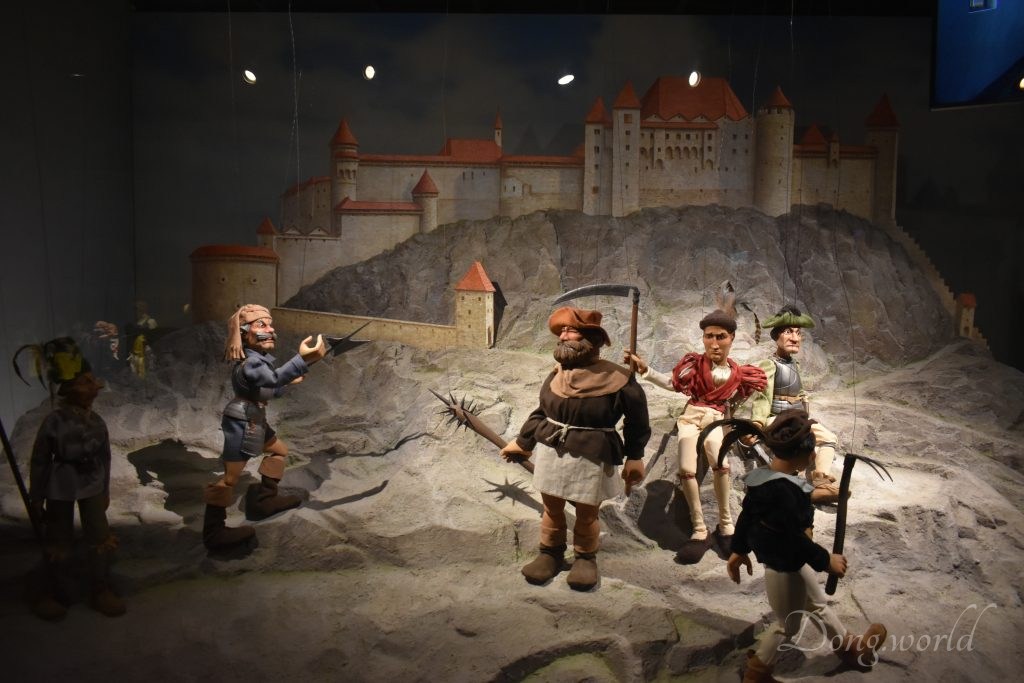
What’s also notable in this city is the Salzburg Marionette Theatre, inscribed in the UNESCO List of Intangible Cultural Heritage, on which 96 traditions in Austria are featured and 25 of them are in Salzburg Province. The theatre is particularly worth preserving due to its “highly developed form of puppet and marionette theatre”. As commented by the UNESCO, “the Salzburg Marionette Theatre has been dedicated to this art from since 1913. Aside from performance skills, it also requires passion on the craftsmanship required to carve, paint, costume and move the puppets.” I’ll talk more about this form of art when I introduce to you the Marionette Museum in the Hohensalzburg Fortress. Do you remember in “The Sound of Music“, Maria and the seven children perform a puppet show with the song “The Lonely Goatherd” to impress Captain Georg von Trapp and the Baroness? It seems the movie does try to integrate the heritage of the city.

Silent Night
Holy Night
All is calm
All is bright
Round yon virgin
Mother and child
Holy infant so tender and mild
Sleep in heavenly peace
Sleep in heavenly peace
Do you know the song above? It is certainly one of the or even the most popular Christmas carol and both its lyrics and melody are so familiar. Once I hear it either on the streets or on TV, I know that Christmas is coming. Composed in 1818 by Franz Xaver Gruber with lyrics by Joseph Mohr in the small town of Oberndorf bei Salzburg, “Silent Night” was declared an intangible cultural heritage by the UNESCO in 2011. Although the original version of the words and melody from 1818 no longer exists, four original autographs by Franz Xaver Gruber (written in his own hand) have been preserved. In the Salzburg Museum housed in the Neue Residenz, you will have the opportunity to see the only autograph from the pen of Joseph Mohr (facsimile). As you can see from the picture above, the title at that time was simply “Weihnachtslied” (Christmas Carol).
1.2.1 Salzburg as an ecclesiastical principality and state of the Holy Roman Empire
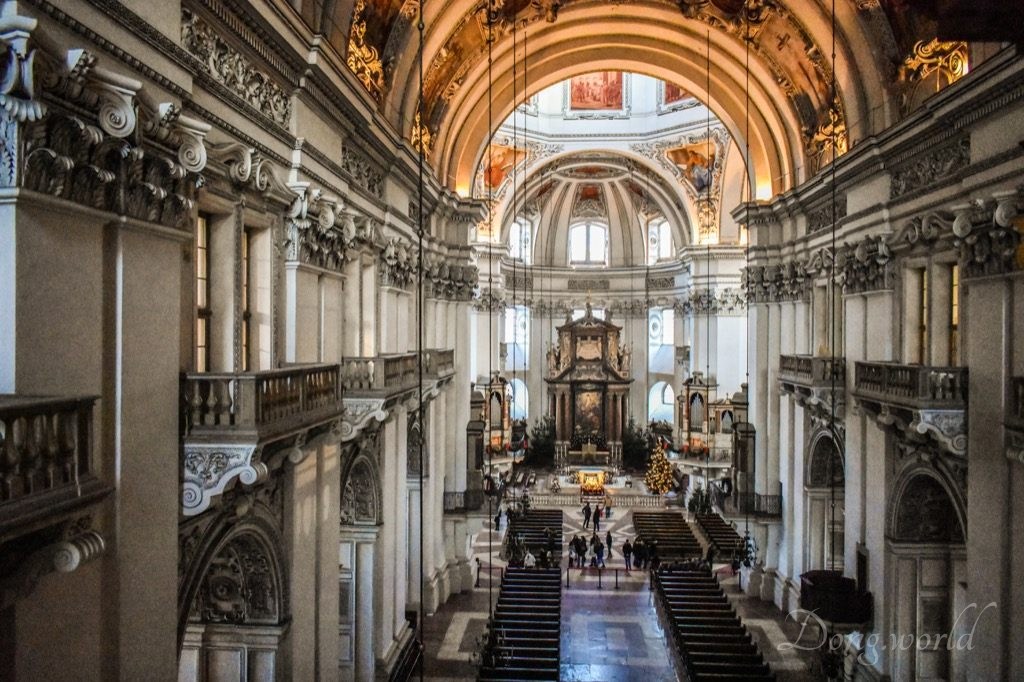

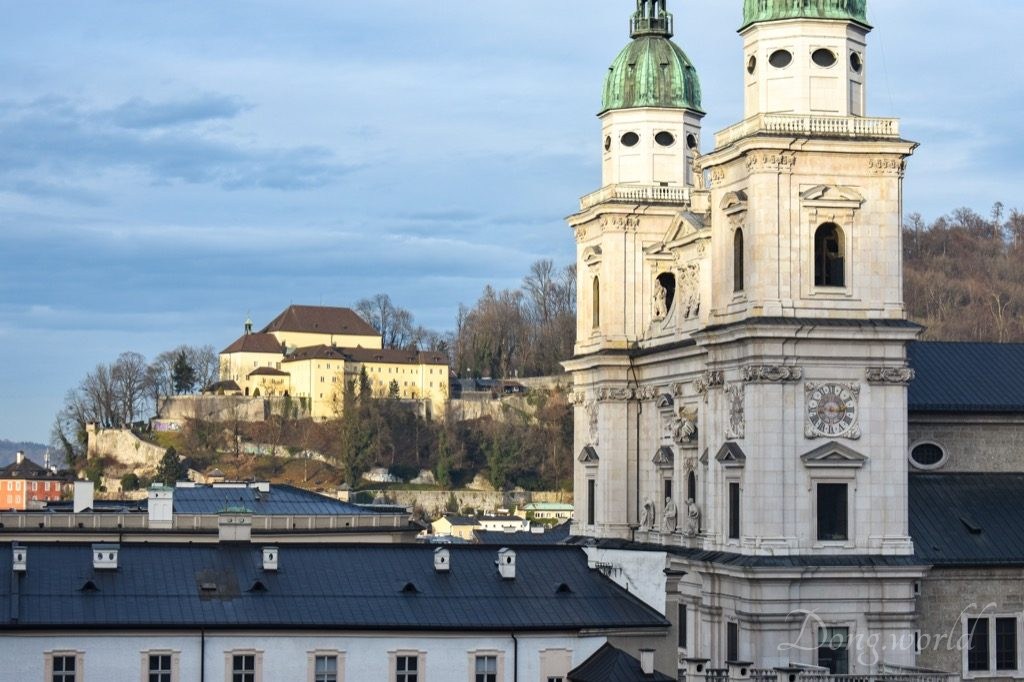
For over 1000 years, Salzburg was part of the Holy Roman Empire with its ecclesiastical power in the hands of the archbishops. As I read from the press information, “after the Vatican, it was the second most important seat of the church, thus the name, ‘The Rome of the North’.” The Baroque squares, narrow valleys, churches and monasteries all testify to the architectural, artistic, historical and cultural legacy of the prince-archbishops. As a state of the Holy Roman Empire, Salzburg, as its name indicates (Salz means salt in German), owed its wealth to the mining of salt, ores and precious stones, which allowed the untiring building activities in the city. During this period of time, Rome, as the model, played an important role in shaping Salzburg’s appearance. A cathedral, many churches, chapels, monasteries and even graveyards were built under the influence of Italian precedents. Many of the constructions were overseen by Italian master architects including Vincenzo Scamozzi, the spiritual heir of Andrea Palladio, who designed countless masterpieces in the Veneto region. What’s particularly worth mentioning is the period between 1587 and 1612, when Prince-Archbishop Wolf Dietrich, a great admirer of the Italian way of life, made a long-lasting impression upon the appearance of the town by transforming the medieval Salzburg into a peal of the early Baroque period. All in all, we can say that the archbishops laid the foundations for the Salzburg that we see nowadays, the city of churches.
In successfully making Salzburg a globally recognized major city in the music world, the patronage provided by the prince-archbishops to the musicians and composers in old times played a vital role. In the cathedral, you will see the magnificent main organ on the western gallery as well as the south-eastern pipe organ, the “Hoforgel” (Halo Organ) which was frequently played by W. A. Mozart. Also here, you will see the font in which both Mozart and Joseph Mohr, the lyricist for “Silent Night”, were baptized.
In order to have a better or deeper understanding of this aspect of the city, I recommend you visiting the cathedral, DomQuartier Museums, St. Peter’s Church, Cemetery and Catacombs, the Nonnberg Priory, the Holy Trinity Church, St. Sebastian’s Church & Cemetery, the Capuchin Monastery and the Franciscan Church. If you are particularly interested in religion, please click here to check the full list of churches that you can visit in Salzburg.
1.2.2 A musical metropolis and the birthplace and residence of W. A. Mozart
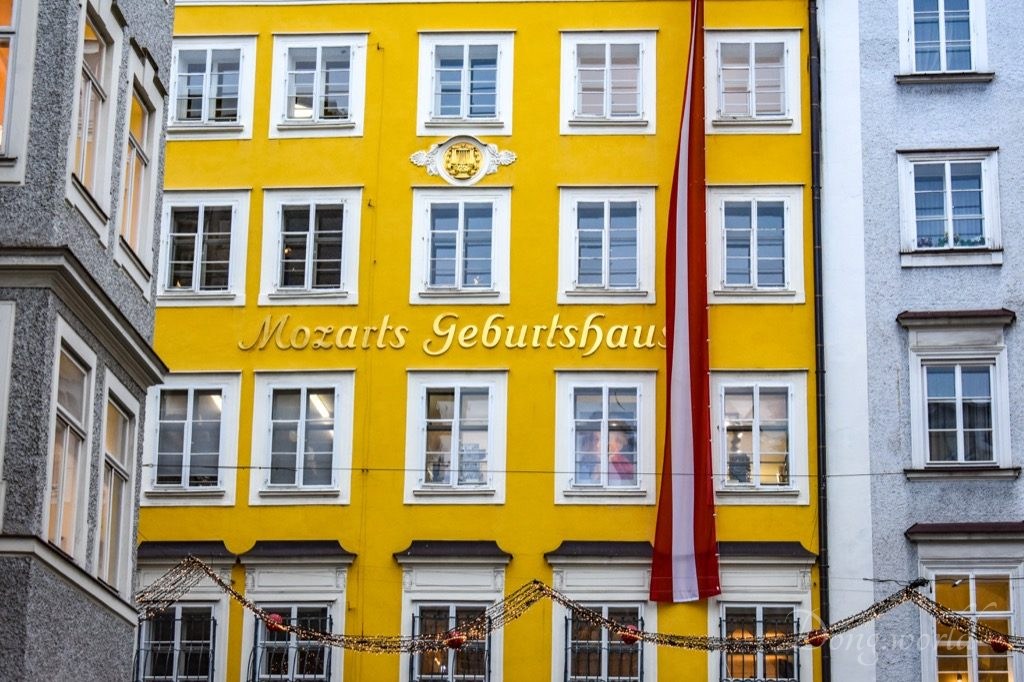
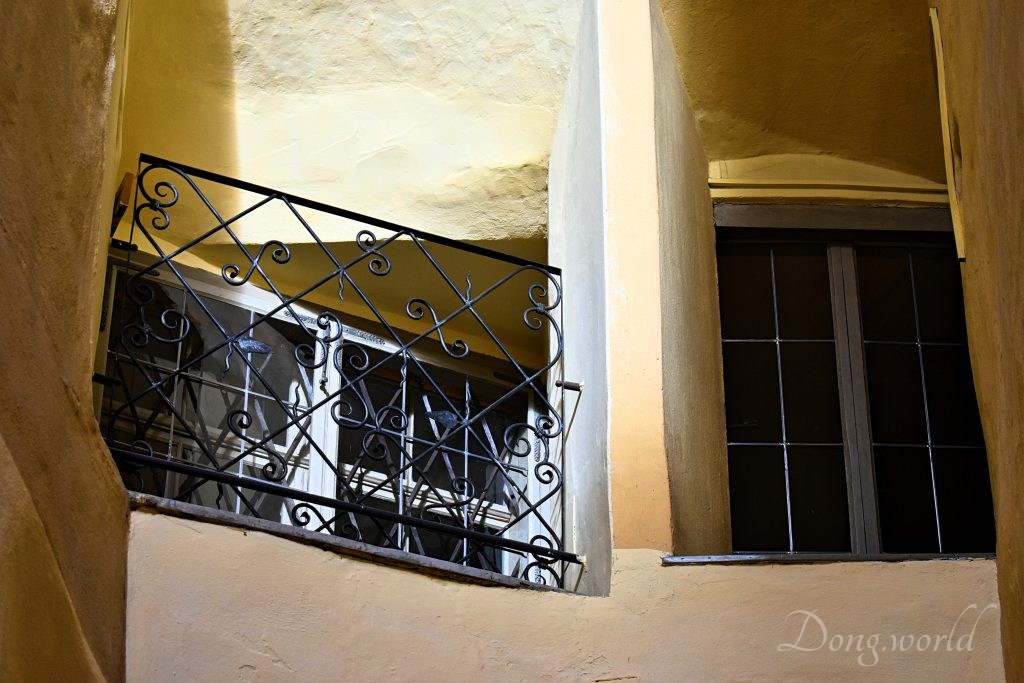
The first thing I know about Salzburg is that it’s the city where the music genius Wolfgang Amadeus Mozart was born and grew up. Judging from the amount of tourists in Mozart’s Birthplace and Residence Museums, I’m certain that he is one of the main reasons why people choose to come here. Born on 27th January 1756 in Getreidegasse 9, Mozart showed prodigious ability from his earliest childhood. Already competent in keyboard and violin, he composed from the age of five and performed before the European royalty. After the completion of renovations in 2010, Mozart’s Birthplace now houses a permanent exhibition based on four themes. As you can see in the first picture above, it is one of the most frequently photographed buildings and one of the most visited museums in the world. Why? Because it is right here at this place that he wrote more than 350 of his most beautiful pieces and we can say that this house witnessed not only Mozart’s birth but also the development in his career which eventually turned him into one of the most significant composers in the world. Another building or museum I’d like to recommend to you is the Mozart Residence, where Mozart lived from autumn 1773 until 1780 before settling for the rest of his life in Vienna.

Since we are talking about Mozart, I’d like to take a “detour” for chocolate lovers. In 1890, Salzburg’s master confectioner Paul Fürst invented a praline and called it Mozartkugel (Mozart Ball) in honor of the great composer. The praline features its round shape and technically difficult concentric composition: green pistachio marzipan surrounded by a layer of nougat, and dipped into dark melted chocolate. The “Original Salzburger Mozartkugel” is a specialty still produced by hand nowadays without any artificial ingredients or preservatives and it can not be found in international supermarkets or souvenir booths but only in the four “Confiserie Fürst” shops in Salzburg. Please note that I saw many shops selling Mozartkugel wrapped with foil with the famous colorful portrait of Mozart, but that’s not the original one. The original ones can only be found in the “Confiserie Fürst” shops, as you can see from the picture above, and they are wrapped with silver foil with a portrait of Mozart in blue.

Talking about music in Salzburg, if the most famous person is Mozart, then the most famous song is probably “Silent Night“, first performed at the former St. Nikola parish church in Oberndorf bei Salzburg by the schoolmaster Franz Xaver Gruber and the young priest Joseph Mohr on Christmas Eve 1818. The lyricist Joseph Mohr was born and raised in Salzburg and the original autograph transcribed in his own hand is now preserved in the Salzburg Museum. As you might have noticed, 2018 will be the 200-year anniversary of the song and various events will take place in the city throughout the year. For example, from 24th November to 18th December 2018, the musical “Silent Night Story” written by John Debney for this occasion will be performed at the Felsenreitschule; from 30th November to 16th December 2018, the traditional Salzburg Advent Singing will introduce its own special production focusing on the “Silent Night” theme; and from 28th September 2018 to 3rd February 2019, a special exhibition called “Silent. Night. 200. Creation, Message & Commerce” will be held in the Salzburg Museum. In keeping with the six verses of the song, the exhibition comprises six thematic spaces depicting the musical qualities of the song, its dissemination, the biographies of its creators as well as its political and commercial exploitation. If you wanna know more about the advent events related to the “Silent Night” in 2018, please click here.
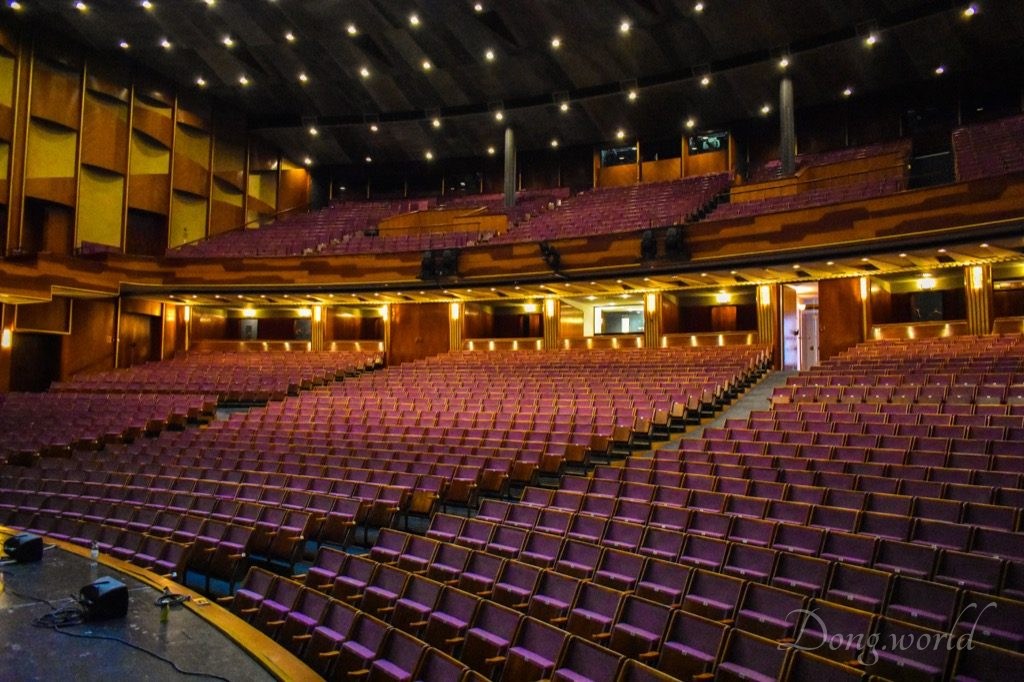
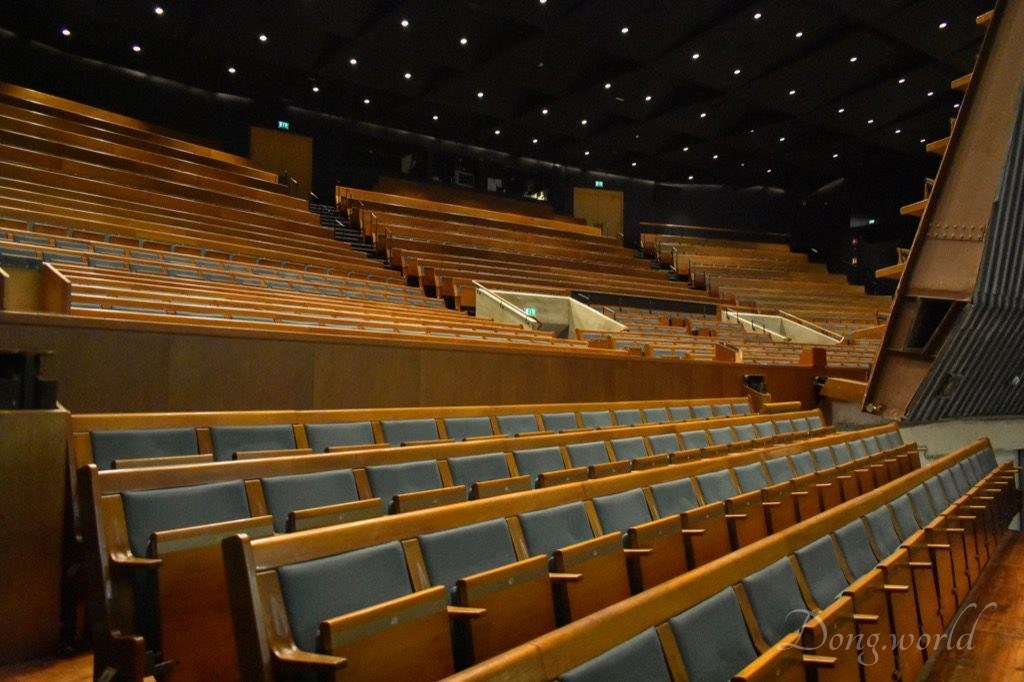
Did you know that Salzburg has another nickname which is “Stage of the World“? As a world-renowned musical metropolis, it holds 4500 cultural events each year. For example, at the end of January or beginning of February, the high-quality Mozart Festival, featuring fantastic soloists, conductors and orchestras such as the Vienna Philharmonic Orchestra, Concentus Musikus, Camerata Salzburg and the Mozarteum Orchestra, attracts numerous music lovers to the city; in the spring, there are the Easter and Whitsun Festivals founded by the world-famous Salzburg-born conductor Herbert von Karajan; in the autumn, there is the Festival Jazz and the City; and in the winter during the Christmas time, probably the most beautiful time of the year, the Salzburg Advent Singing at the Large Festival Hall (Grosses Festspielhaus), the Salzburg Advent in St. Andrew’s Church and the Winterfest will surely take you into a fairyland full of music, romance, warmth, peace and winter charm. Not on time for the festivals? Don’t worry. Throughout the year, you will find Salzburg Palace Concerts in the Mirabell Palace, Fortress Concerts in the state rooms of the Hohensalzburg Fortress, Mozart Dinner Concerts in St. Peter’s and a diversified program offered by Salzburg’s Marionette Theater. If you are interested, please click here to check the ongoing events upon your arrival and maybe book your tickets in advance.
Did you notice that I didn’t mention any festivals in the summer in Salzburg? It’s not because nothing is happening during this season but because the festival is so important that I wanna dedicate a paragraph to it separately. This festival is called “Salzburger Festspiele” (Salzburg Festival in English) and is held each summer (for five weeks starting in late July) with one highlight being the annual performance of the play Jedermann (Everyman) by Hugo von Hofmannsthal. Founded in 1920 after World War I by Max Reinhardt together with a group of intellectuals and artists such as the poet and dramatist Hugo von Hofmannsthal, the composer Richard Strauss, the scenic designer Alfred Roller and the conductor Franz Schalkwho, who aimed at turning the entire city into a stage, the Salzburg Festival is one of the world’s most distinguished music festivals with many prominent guests. The Festival Halls, where the festival is held, offer a guided tour of the Felsenreitschule and the Great Festival Hall (Großes Festspielhaus) and I’ll talk more about them in my second post about Salzburg.
In general, if you wanna experience Salzburg as a musical capital, I recommend you visiting the birthplace and residence of Mozart, joining a guided tour of the Festival Halls or simply attending one of the festivals or concerts during your visit. If you are particularly interested in the Christmas carol “Silent Night“, you should visit the Salzburg Museum housed in the Neue Residenz.
1.2.3 A unique cityscape integrating northern and southern European cultures
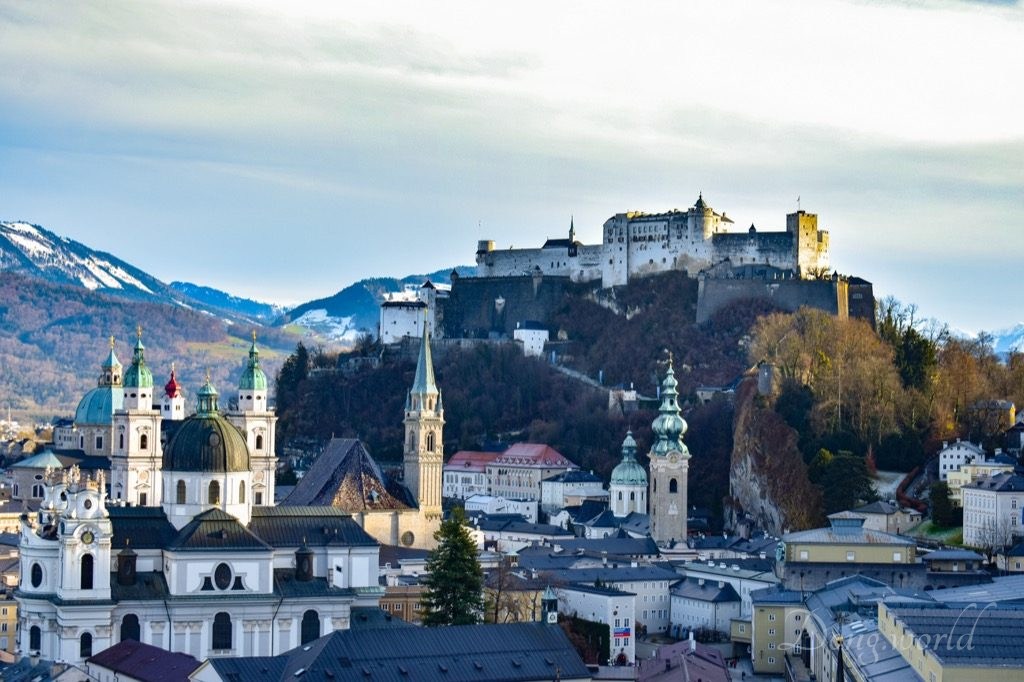
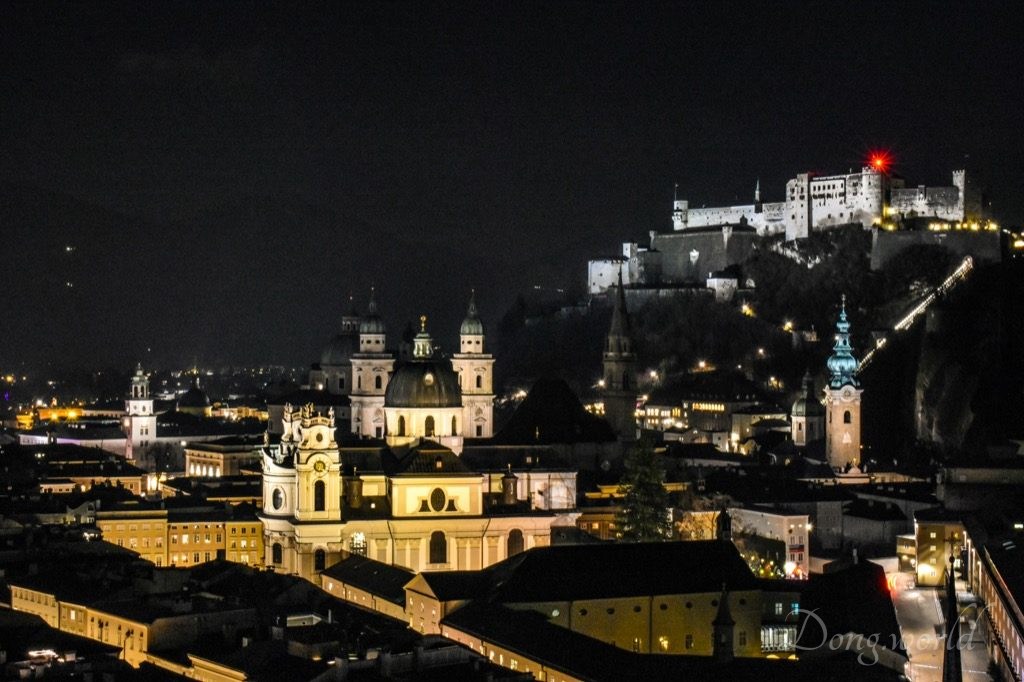


Established at the end of the 7th century, Salzburg was ruled by Catholic bishops and archbishops up until the early 19th century. A walk in the historical center will surely make you fall in love with the city but even better, why not going up the surrounding hills such as Mönchsberg, Festungsberg and Kapuzinerberg to have a stunning view of the harmonious blend of scenic landscapes and architecture? As you can see from the four pictures above, which were taken from the viewing platforms of the three hills I mentioned just now, all the baroque churches, squares, narrow streets and houses are under your eyes. The Hohensalzburg Fortress, a baroque masterpiece, can be seen from almost everywhere in the city. Dating back to the 11th century, it is one of the largest fortifications in Europe. In the festival district, you can still find evidence of the Medieval period and the Getreidegasse is one of the most charming shopping streets in the world. The St. Peter’s Monastery accommodates the city’s most lovely cemetery and the cathedral features a mighty dome and a magnificent façade which is made of Untersberg marble. In my third post about Salzburg, I’ll recommend you some viewpoints where you can truly and fully admire the beauty of this amazing city, both in the daytime and at night.
Besides appreciating its charming scenic appearance, the best way to gain a deeper understanding of Salzburg’s cultural and historical heritage is to visit its more than 20 museums and galleries. In additions to the ones I mentioned above such as the DomQuartier, the Hohensalzburg Fortress, St Peter’s Abbey, Mozart’s Birthplace and Residence, the Festival Halls and the Salzburg Museum, I recommend to you the Salzburg Open-air Museum, one of the largest museums in Austria and one of the biggest of its kind in the world, the Panorama Museum, home to an enormous panoramic painting of the historical Salzburg city and its surroundings created by J. M. Sattler, the Stiegl-brauwelt, Europe’s biggest interactive exhibition dedicated to the world of beer, Haus der Natur, one of the most visited natural history museums in Europe featuring an aquarium and a reptile zoo, the Salzburg Christmas Museum and the Museum of Modern Art. In my four posts, I’ll cover all the museums and give you a rather detailed introduction to the ones that impressed me a lot.
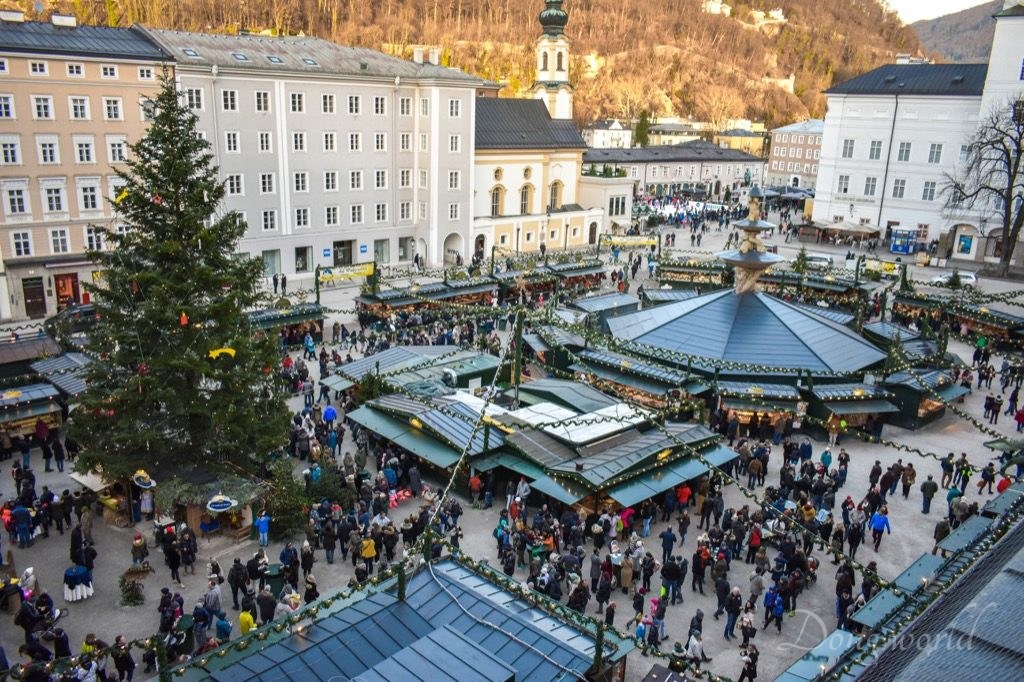


Considering I was in Salzburg during the Christmas in 2017, I’d like to talk a bit more about the Salzburg Advent. The Christmas market (Christkindlimarkt in German) on the Cathedral Square and Residence Square is absolutely a highlight and I learnt from the press information sheets that with its over 525-year history, it is one of the oldest and most beautiful advent markets in the world. In fact, besides the market on the two main squares, there are more in the Sterngarten, on the Mirabell Square, at the Hohensalzburg Fortress and at the St. Peter’s. Basically the entire historical center is turned into a winter fairyland with romantic, warm and magic Christmas atmosphere. From the end of November till Christmas, the booths offer visitors not only tasty culinary delicacies but also traditional handcrafted products from Salzburg. As I mentioned above, this year, 2018, the Christmas here will be even more special because of the 200-year anniversary of the song “Silent Night”. Just a reminder, there is a Christmas Museum on the Mozart Square and I visited it because it seemed to be the “right” thing to do in such a closely related festive season. It is small but cute and if you are from western countries, I’m sure it will bring back your memory of the Christmas in your childhood. If, like me, you are from some other parts of the world, where Christmas is not really much celebrated, the museum gives you a good opportunity to learn about the history and tradition of it.
2. Practical information
2.1 Salzburg Card
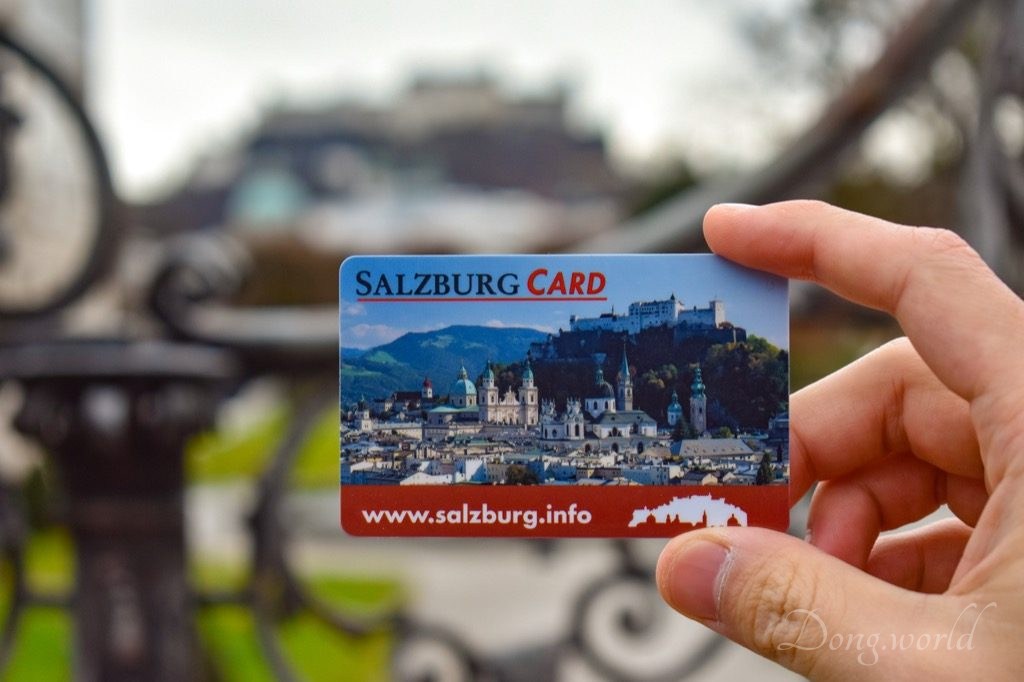
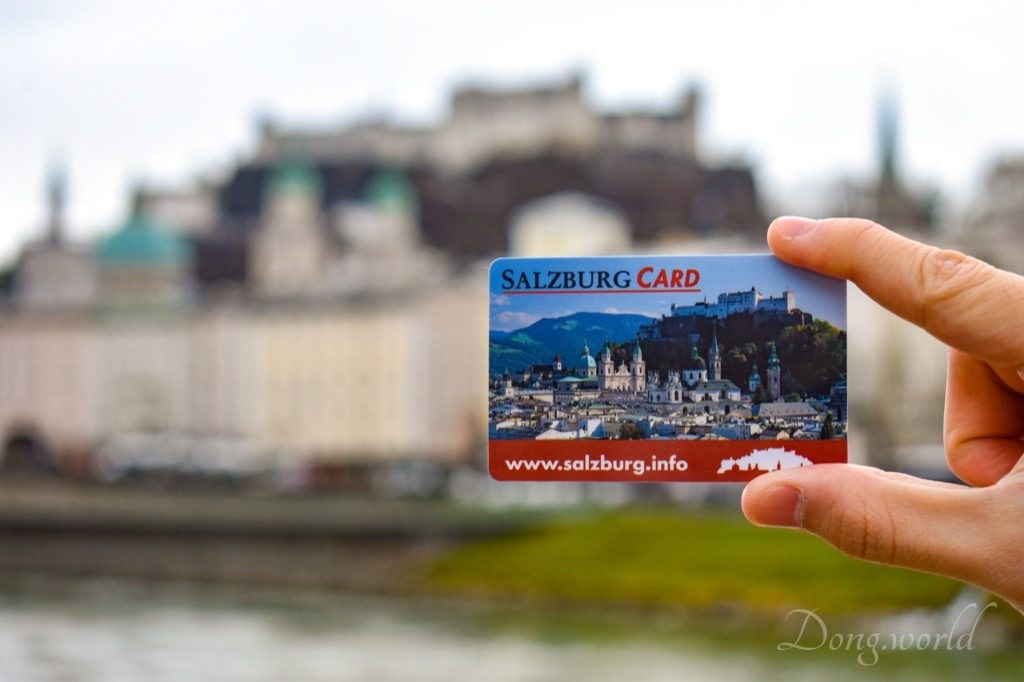
Concerning your visit in Salzburg, I’d like to give you some practical information such as the Salzburg Card, the public transport, etc. By the end of this chapter, I’ll tell you the general arrangement of content of my four posts about the city and depending on how much time you have to spend here and which aspect(s) of the city you are most interested in, you can choose to read the most relevant posts in detail.
First of all, if you want to visit most of the major attractions in Salzburg such as the DomQuartier, the Hohensalzburg Fortress, the Birthplace and Residence of Mozart and so on, I strongly recommend you buying the Salzburg Card. It has several advantages and using it to explore the city is absolutely a good deal. With this card, you can enjoy:
- one-time free entry to all the attractions and museums in the city (including the lift to go to Mönchsberg and Hohensalzburg Fortress)
- free travel on public transport (even to the Untersberg cable car station)
- discounts on cultural events such as concerts
- discounts on tours and excursions.
I was rather shocked that this one card gives free access to all the attractions in the city, but after using it, I can assure you that it’s true. Nevertheless, please note that as for entering the state rooms in the Hohensalzburg Fortress, you have to use the card before 11:00 to gain free access. The card is available at most hotels, tourism offices and ticket offices in and around Salzburg and if you wanna order it online in advance, please click here. At the back of the card, remember to write down your name and the date and time of your first use because it serves as your public transport ticket. When you get your card on site, you will get a booklet called “All of Salzburg. One card. All-inclusive”, which is very useful for your trip. In one side of it, you will find a list of the attractions together with some tips, their brief introductions, opening hours and addresses while on the other side you, will see various events, tours and excursions with discounted prices.
How much does the card cost? Well, depending on the season of your visit and how long you need the card to be valid for, the prices are different. This is because in winter some attractions such as the Hellbrunn Palace and the Salzach Cruise (from November to March) are closed and suspended.
From 1st November to 30th April and from 1st November to 31st December, each card costs:
- 24 hours: 25 €
- 48 hours: 33 €
- 72 hours: 38 €
- Please note that children between 5 and 16 years old can get the card for half price.
From 1st May to 31st October, each card costs:
- 24 hours: 28 €
- 48 hours: 37 €
- 72 hours: 43 €
- Please note that children between 5 and 16 years old can get the card for half price.
Which card should you buy? Well, depending on how many days you will stay, you should buy the corresponding card. For me, I got the 72-hour one and spent entire three days there, but still, I couldn’t visit all the attractions because there are really too many. I didn’t manage to visit the Open-air Museum, the zoo, the Stiegl Beer Museum, the Mozart Sound and Film Collection and so on and I suggest that after reading my posts, you can make a choice of your “preferences”. Don’t be greedy because you can’t see everything in Salzburg during only one trip anyway and I recommend you taking your time to get close to it, explore it and understand it.
2.2 Public transport

If you live quite close to the historical city center, I don’t think buses are that important. One thing I liked a lot about Salzburg is that its attractions are quite concentrated, which means that I didn’t need to travel a long distance to visit them. I remember that except for going to the mountain Untersberg and the Stiegl-brauwelt, I visited everything on foot. Nevertheless, during your visit, if you want to go to the Open-air Museum, Salzburg Zoo, the Hellbrunn Palace and the Trick Fountains (which I didn’t visit because I didn’t have enough time), you need to take the bus. Don’t worry, all the rides are free with the Salzburg Card.
2.3 General structure of my four posts about Salzburg
In my four posts about Salzburg, I will try to elaborate on the three criteria that the city meets which make it a World Heritage site protected by the UNESCO. In the first post, I’ll talk about the fortress, the DomQuartier (including the former residence of the prince-archbishops, the cathedral and St. Peter’s Abbey), evidence of the power and influence of the archbishops. In the second post, I’ll focus on the city’s role as a musical metropolis and introduce to you the birthplace and residence of W. A. Mozart and the Festival Halls where the famous Salzburg Festival is held every summer. In the third post, I’ll recommend you some great spots to admire the beauty and charm of the city and in the last one, I’ll enhance your understanding and knowledge of its historical and cultural heritage by introducing to you some more museums such as the Salzburg Museum and the Panorama Museum. Even though I didn’t have time to visit some of the attractions that I had planned to, I’ll give you a brief introduction based on the information provided by the tourism office so that you can have more choices. Now, let’s start exploring and discovering Salzburg’s rich history and culture.
3. Mozart’s Birthplace




Opening hours:
- daily 9:00 – 17:30 (last entry 17:00)
- July & August: 8:30 – 19:00 (last entry 18:30)
Ticket prices:
- Full price: € 11
- Reduced price (groups of 10 or more people, students and seniors): € 9
- Pupils (15 – 18 years old): € 4
- Children (6 – 14 years old): € 3.5
- Children (up to 6 years old): free
- Family tickets (2 adults with children): € 23
- School groups: € 3 each
- People with disabilities (1 accompanying person free): € 9
- Salzburg Card: free
Please note that if you plan to visit both the birthplace and residence of Mozart, which I suggest you do, but don’t have the Salzburg Card, you can buy the combined ticket and it costs:
- Full price: € 18
- Reduced price (groups of 10 or more people, students and seniors): € 15
- Pupils (15 – 18 years old): € 6
- Children (6 – 14 years old): € 5
- Children (up to 6 years old): free
- Family tickets (2 adults with children): € 38
- School groups: € 4.5 each
- People with disabilities (1 accompanying person free): € 15
- Salzburg Card: free
It is strictly forbidden to take pictures both in Mozart’s Birthplace and Residence. Therefore, the photos of the interior of these museums are shared with me by the tourism office of Salzburg and when I attach them to the corresponding sections, the copyright will be written under them. Though an audio guide is provided and included in the entry ticket in Mozart’s Residence, I recommend you buying a pocket guide available in both museums and costs 1 euro. It includes a rather detailed introduction to the rooms and collections (with pictures) in both of the museums and my introduction below will also be mostly based on it.
Thanks to the invaluable contributions made by Wolfgang Amadeus Mozart to the musical world, this yellow building, as you can see in the first picture above, is one of the most frequently photographed buildings and one of the most visited museums in the world. The Mozart family lived here for 26 years before moving to the Mozart Residence on the other side of the Salzach River in 1773. Leopold Mozart, W. A. Mozart’s father, was a chamber musician and composer in the service of the prince-archbishop while Anna Maria Pertl, W. A. Mozart’s mother, was a housewife and took care of the household with the help of a maid. The couple had in total seven children but only two of them survived, that is to say, Wolfgang Amadeus Mozart and his older sister, commonly known as “Nannerl“.
Only a few changes have been made to the façade of the house since the time the Mozart family lived here. For example, the Baroque window frames were removed and at the end of the 19th century, the storey under the roof was converted. The museum was founded in 1880 but at that time, it only comprised the third floor which was the apartment of the Mozart family. In the following years, it gradually expanded and now it covers an area of 600 square meters with more 300 exhibits. The Salzburg Mozarteum Foundation bought the building in 1917 and has been owning and managing it ever since. The exhibition here is divided into four parts based on four themes, that is to say, The Mozart apartment and Mozart in Vienna and Mozart’s posterity on the third floor, Mozart at the theater on the second floor and Day-to-day life of a child prodigy on the first floor. Please remember to start your tour on the third floor from the Mozart apartment.
3.1 Mozart apartment
The apartment is composed of four rooms, a hallway and a kitchen.
3.1.1 Kitchen

During the 18th century, kitchens in middle-class houses were usually not part of the apartment due to the intense emission of smoke and danger of fire. It was usual for several households to share a kitchen.
3.1.2 Hallway
In the hallway, you will see a large family tree of the Mozart family. Leopold and Anna Maria Mozart had seven children but only two of them survived, who are W. A. Mozart and his older sister “Nannerl”. W. A. Mozart and his wife Constanze had six children but only two of them survived, that is to say, Carl Thomas and Franz Xaver Wolfgang. Nowadays there are no descendants of the Mozart family. W. A. Mozart’s sons died unmarried and without children and when Nannerl’s great-granddaughter Berta Forschter died in 1919, the line was distinguished.
3.1.3 Storage room
This room was originally used as a storage and later as W. A. Mozart’s bedroom. Various documents provide background information about W. A. Mozart’s parents and the most important one in the display case is the letter by Leopold to his publisher, in which he writes about the birth of his son at 20:00 on 27th January 1756. I guess you can already guess who the son is.
3.1.4 Living room

The living room is the biggest and brightest room in the apartment and it was also here that the family ate and played music. On the wall you can see four portraits with the middle two being probably the most famous portraits of the two Mozart children and the two on the sides being of Leopold Mozart and Anna Maria Pertl Mozart. The one of W. A. Mozart depicts him at the age of nine and wearing the gala outfit presented by Empress Maria Theresa because of his successful appearance at the Viennese court. In the display cases below the four paintings, characteristics of the four family members are described based on quotes from letters: “the humorous mother, the well-behaved sister, the critical father and the unconventional son Wolfgang Amadeus.” Some other portraits of W. A. Mozart in this room include “Mozart with the Diamond Ring” and “Mozart in Verona” (a copy of the original).
Also in this room, you can see W. A. Mozart’s first compositions in the display cases and various editions of Leopold Mozart’s “Versuch einer gründlichen Violinschule” (A Treatise on the Fundamental Principles of Violin Playing), published in 1756. Besides being a chamber musician and composer in the service of the prince-archbishop, Leopold was also a violin teacher and educational theorist and he taught his children at home. Even just at the age of five, W. A. Mozart was able to play violin and piano and wrote down his small compositions already.
3.1.5 Bedroom

This room is probably the room where the Mozart children were born and it is said that Nennerl was born on the night of 30th or 31st January 1751 and W. A. Mozart was born at 20:00 on 27th January 1756, the youngest of the seven children of Leopold and Anna Maris (five of the seven children didn’t survive until adulthood).
We can say that this is the most important room in the museum because it exhibits a lot of personal objects of W. A. Mozart such as his buttons, wallet, ring, tobacco tin and hair. These items came into the possession of the Salzburg Mozarteum Foundation through friends and members of the family. One absolute highlight here is the violin used by W. A. Mozart when he was a child and like the other original Mozart instruments owned by the Salzburg Mozarteum Foundation (in total 6), it is in excellent playable condition.
3.1.6 Study
This room was probably used by both Leopold and W. A. Mozart for composing and now it is dedicated to W. A. Mozart’s own family. On the wall, the double portrait shows Franz Xaver Wolfgang and his older brother Carl Thomas, sons of W. A. Mozart, and after their father’s early death, Constanze Mozart brought them up by herself. Also in this room you will see a silverpoint pen drawing by Dora Stock, which is probably not only the most famous work of this artist but also W. A. Mozart’s truest portrait. As I read from Wikipedia, in April 1789, Dora Stock was living in Dresden with Minna and Gottfried and at the same time, W. A. Mozart was passing through the city and giving concerts, as part of the Berlin journey he made in the spring in 1789. On either 16th or 17th April 1789, W. A. Mozart made a social visit to the Körner home and Dora Stock took the occasion to sketch a portrait of him in silverpoint on ivory board. He was 33 years old at that time and it is said in the pocket guide that “he was not made to look more handsome than he was and the thick hair and protruding eyes are particularly noticeable”. Also mentioned in an article about Dora Stock in Wikipedia, after a few changes of ownership, the drawing was sold by the heirs of Albi Rosenthal at the end of 2005 to the Salzburg Mozarteum Foundation for 250,000 British pounds. It is extremely fragile so the drawing on display here is a very high-quality copy.
Another important portrait of W. A. Mozart is a miniature on a tobacco tin from 1783. It was not until 2013 that this miniature was identified as an authentic portrait of him and the special thing about it is that W. A. Mozart was shown from a frontal view. Until then, only profile views of him from the last decade of his life were known.
Now let’s move to the back of the house and check out the second theme, Mozart in Vienna and Mozart’s posterity.
3.2 Mozart in Vienna and Mozart’s posterity
This theme is elaborated in five rooms which focus on the most important sides of W. A. Mozart’s time in Vienna, his early death and his posterity.
In Room 8, An Artist’s Life, we come to know why W. A. Mozart left Salzburg for Vienna and how his daily life was like there. In 1781, W. A. Mozart chose to go to Vienna because in Salzburg, the musical life was entirely focused on the court of the Prince-Archbishop Hieronymus von Colloredo and his wish to compose operas could not be fulfilled. In Vienna, he not only worked as a composer but also a teacher, a pianist at concerts and even a chamber musician at the imperial court. In a letter exhibited here from him to his sister Nannerl, we can gain some insights into how he spent the day and what a large amount of work he had to do. He only had time to compose at night and early in the morning and usually he could only get five hours’ sleep. Such a hard-working genius, how can he not be successful? Another display case is dedicated to the death of W. A. Mozart and probably you knew already, he died at a very young age, on 5th December 1791 when he was only 36 years old. Sometimes, I like to compare him to Giorgione and Raphael because all of them only lived for a short time but made their names unforgettable in human history. There’s always myth around W. A. Mozart’s death but as I read from the pocket guide, he died after a long illness and only one day later, he was buried at the St. Marx Cemetery. It is unclear what disease caused his death but poisoning, being one of the theories, is widely discredited. Rumor also has it that he had a simple funeral or even a funeral of the poor but as suggested in an article called Death of Wolfgang Amadeus Mozart on Wikipedia, “modern scholarship generally supports the view that the funeral arrangements were normal for Mozart’s time”.
Room 9, After Mozart’s Death. This room is dedicated to the closest members of the W. A. Mozart family, that is to say, W. A. Mozart’s two sons, his sister Nannerl and the sisters of his wife Constanze Mozart. First, the two large oil paintings depict W. A. Mozart’s two sons, Carl Thomas, the older son who because a civil servant and lived in Italy for 50 years and Franz Xaver Wolfgang, who became a teacher to a noble family in Lvov and spent most of his time there. In 1842, the younger son conducted a festive chorus he had written for the unveiling ceremony of the Mozart statue and a hand-written copy can be seen in the display case here. Another large oil portrait is of W. A. Mozart’s sister, Nannerl, who played an important role in telling the life and work about his bother. In this room, some other information is provided about W. A. Mozart’s wife’s sisters and second husband, the Danish diplomat Georg Nikolaus Nissen. The married couple published the first extensive biography of Mozart and after living in Copenhagen for ten year, they chose to retire in Salzburg.

Room 10, Posterity. A significant historical event in Salzburg is the unveiling of the Mozart statue. Unfortunately, Constanze Mozart wasn’t able to witness it because an archeological discovery of some Roman mosaics delayed the plan and she died on 6th march, 1842, exactly half a year before the real ceremony. Two rarities can be seen in this room are the photographs of Constanze Mozart, which was taken in around 1840, when this technique was just invented a few years earlier and of Carl Thomas, which was taken in 1856 during his visit in Salzburg. Also worth learning about here is the history of the Salzburg Mozarteum Foundation, founded in 1880 and evolved from the Cathedral Music Association and Mozarteum which was founded in 1841. In fact, Mozart’s Birthplace is the world’s oldest museum dedicated to a composer. In the display case on the left, you can see historic photos of the Magic Flute Summer House, originally located in the courtyard of the Freihaustheater in Vienna. It was the theatre where Mozart’s opera “The Magic Flute” was first performed and was moved on the Kapuzinerberg in Salzburg in 1877. Unfortunately, it is not open to the public but a large painting commissioned to Anton Romako for the house can be seen in this room.
In Room 11, Mozart Online, you can digitally browse through Mozart’s original manuscripts on the computers and listen to his music with the headphones. It surely adds a modern touch to the museum.
Now, please go downstairs with me to the second floor and visit the third part of the museum, Mozart at the Theater.
3.3 Mozart at the theater
This section of the museum focuses on W. A. Mozart as an opera composer and various models of the stage sets, designs, costume drawings and photos of the stages are shown.
3.3.1 Mozart at the piano (room 12)

On the wall, as you can see in the picture above, hangs one of the most valuable and mysterious portraits of W. A. Mozart. It’s called “Mozart at the Piano” and was painted by his brother-in-law, Joseph Lange in 1789. However, it is never finished. The clavichord, also can be seen in the picture above, is a stringed keyboard instrument and belonged to W. A. Mozart. According to a hand-written confirmation by Constanze Mozart, W. A. Mozart composed his last works such as “Die Zauberflöte (The Magic Flute)”, “La clemenza di Tito” and “Freemasons’ Cantata” with it. In one of the display cases you can see the theater bill of the premiere of “The Magic Flute” and a walking stick which was given by W. A. Mozart to Franz Xaver Gerl, who played the role of Sarastro in the first performance of this world-renowned opera.
3.3.2 Singers and public (room 13)
In this room you can see portraits of various singers, models of stage sets and in the curved red display case, engravings by Joseph Schaffer provide insights into the first performance of “The Magic Flute”. As an opera composer, W. A. Mozart’s daily life was also closely related to the directors, musicians, singers and of course the audience. What you should know is that at that point, the audience were not so “well-behaved” as nowadays. In the 18th century, they chatted and even received visitors in their booths.
3.3.3 Stage sets from the 19th to the 21st centuries (room 14)
In this room you will see a large theatrical collection of the Salzburg Mozarteum Foundation such as the stage set designs and models of Mozart’s operas.
3.4 Wunderkind Mozart – Mozart the child prodigy
3.4.1 Day-to-day life while traveling (room 15)
In the old days, there were no computers, no smartphones or internet but Leopold Mozart wanted to make the musical talent of his children known beyond Salzburg. How did he manage to do that? He decided to take journeys with the children and present them to the most important courts of the nobility. As written in the pocket guide, W. A. Mozart undertook 17 journeys with the longest one, the Grand Tour of Western Europe, lasting 1269 days, which is 3 years, five months and 20 days. It is said that in total he spent 3720 days traveling, which is about a third of his life. During a mass in the Sistine Chapel in Rome, W. A. Mozart heard the “Miserere” by Gregorio Allegri and he wrote it down afterwards based on his memory. On 5th July 1770, he was conferred upon the Order of the Golden Spur by Pope Clement XIV.
In one of the display cases you will see the certificate concerning W. A. Mozart’s acceptance into the Accademia Filarmonica in Bologna. It is said that he finished the entrance exam in half an hour, which usually took three hours and was accepted as a member although he was under the minimum age of 20 years old. Some other display cases exhibit the traveling utensils, the gifts W. A. Mozart received and many letters written to their friends and relatives during the family’s journeys which provide insights into what they saw and experienced.
3.4.2 Everyday life in Salzburg (room 16)
In this room, you will know more about the daily life of the Mozart family in Salzburg and among the exhibits you can see portraits the friends of the family, letters indicating how they spent their leisure time (particularly playing games) and objects of their daily life such as wigs, a shaving towel, baby bottle, hot water bottle, some medical instruments and prescriptions and so on.
3.4.3 Middle-class living room (Room 17)

This room is furnished with furniture from St. Peter’s Abbey, the former possessions of the Hagenauer family and the other Salzburg families and it creates a general image and atmosphere of a middle-class living room in the 18th century. Only a small chest of drawers that belonged to the Mozart Family has been preserved and now it is exhibited in the Mozart Residence. This will be the last room of our tour in Mozart’s Birthplace Museum and now let’s walk for around 5 mins to visit the Mozart Residence, in which the Mozart family moved in the autumn of 1773.
4. Mozart Residence

Opening hours:
- daily 9:00 – 17:30 (last entry 17:00)
- July & August: 8:30 – 19:00 (last entry 18:30)
Ticket prices:
- Full price: € 11
- Reduced price (groups of 10 or more people, students and seniors): € 9
- Pupils (15 – 18 years old): € 4
- Children (6 – 14 years old): € 3.5
- Children (up to 6 years old): free
- Family tickets (2 adults with children): € 23
- School groups: € 3 each
- People with disabilities (1 accompanying person free): € 9
- Salzburg Card: free
Please note that if you plan to visit both the birthplace and residence of Mozart, which I suggest you do, but don’t have the Salzburg Card, you can buy the combined ticket and it costs:
- Full price: € 18
- Reduced price (groups of 10 or more people, students and seniors): € 15
- Pupils (15 – 18 years old): € 6
- Children (6 – 14 years old): € 5
- Children (up to 6 years old): free
- Family tickets (2 adults with children): € 38
- School groups: € 4.5 each
- People with disabilities (1 accompanying person free): € 15
- Salzburg Card: free
Unfortunately it’s forbidden to take pictures in this museum and I didn’t get any from the tourism office. However, this museum is only composed of eight rooms so I guess it’s not that difficult to give you an orientation and introduction only in words. Please remember to get an audio guide from the ticket office so that you can listen to a detailed explanation of the rooms and collections and even better, while you see some of the original instruments belonged to W. A. Mozart, you can listen to the music either composed or played with them.
In the autumn of 1773, the Mozart family moved into this eight-room apartment on the first floor because the previous one appeared to be too small for the growing family. In the hall, they played music as well as card games. W. A. Mozart lived here until 1780 before settling down the rest of his life in Vienna. He came back here only once for a visit in 1783, with his young wife Constanze. During the first bombing raid on Salzburg on 16th October 1944, the south-western corner of the house was destroyed. Later it was rebuilt and the museum was opened on 26th January 1996.
4.1 Anteroom
In this room, you can see a model of the Mozart Residence which gives us an idea of the living situation of the family. It was designed not only according to the plan of the apartment before being partially destroyed in the Second World War but also based on the comments in the family’s correspondence.
4.2 Dancing Master’s Hall
Throughout their lifetime, all the members of the Mozart family enjoyed playing games and it was in this hall that they played board and card games and music with friends. Three of the most important exhibits here are W. A. Mozart’s original fortepiano, his original violin and the Mozart family portrait. The fortepiano does not contain a signature but is said to have been bought by W. A. Mozart before 1785 to perform at concerts in various concert halls in Vienna. The violin was made by Pietro Antonio dalla Costa in 1764 in Treviso and was used by W. A. Mozart during his time in Vienna. The family portrait shows the father Leopold with a violin and W. A. Mozart and his sister Nannerl sitting in front of the harpsichord. The mother is shown in an oval painting on the wall behind them because she died in Paris in 1778.
4.3 Room dedicated to W. A. Mozart
The first room after the Dancing Master’s Hall is dedicated to W. A. Mozart as well as the music he composed in this apartment. Between 1773 and 1780, he composed many symphonies, serenades, divertimento, violin and piano concertos and church masses not only for the court but also for private commissions. He was employed at the Salzburg court as an organist, harpsichord player and composer, who played not only at church services but also during the evening entertainment of the prince-archbishop. As I mentioned in my previous post, the Violin Concerto No. 5 in A major, K. 219, often referred to by the nickname “The Turkish”, was performed for the first time on 20th December 1775 in the Conference Hall in the Residence of the prince-archbishops.
In the display cases close to the window, three Mozart operas which were written in the Dancing Master’s Hall are shown.
In 1777, Leopold Mozart requested to be dismissed from court service so that he could embark on his journey to Paris. Nevertheless, the request was turned down by the prince-archbishop and W. A. Mozart had to set off accompanied by his mother Anna Maria. In Mannheim, W. A. Mozart became acquainted with with the Weber family and fell in love with Aloisia. He wrote to his father that he wants to accompany her on a concert tour to Italy but Leopold instructed him to continue his journey to Paris. He did so but very much against his will. W. A. Mozart later met the Weber family again in Vienna and married Aloisia’s younger sister Constanze. The portraits of the two women are hanging on the wall. The journey to Paris was indeed misfortunate particularly because W. A. Mozart’s mother died there on 3rd July 1778. He asked a friend of the family, Abbot Joseph Bullinger to deliver the news to his father and sister and the letter can still be seen in the display case on the left side of the door.
4.4 Room dedicated to Leopold Mozart
This room is dedicated to W. A. Mozart’s father, Leopold Mozart, author of the “Versuch einer gründlichen Violinschule” (A Treatise on the Fundamental Principles of Violin Playing), published in 1756. In the two “obelisks”, a small collection from his library can be seen.
4.5 Room dedicated to Maria Anna Mozart (Nannerl)
This room is dedicated to W. A. Mozart’s sister, Nannerl. Do pay attention to the small chest of drawers because it’s the only piece of furniture from the possessions of the Mozart family. W. A. Mozart got on very well with his sister and in his letters he referred to her as “dearest, beloved sister” and “dearest little sister of my heart”. Nannerl also tried composing but unfortunately none of her compositions remain. Nevertheless, her diary does tell us a lot about the life in Salzburg at that time and the Mozart family. Her first child, the son called Leopold, was born in 1785 in the Dancing Master’s Hall and he lived here with his grandfather for 1.5 years until Leopold Mozart’s death on 28th May 1787. Nannerl also had two daughters but both of them died in infancy.
4.6 Special exhibition area Bibliotheca Mozartiana
The Bibliotheca Mozartiana was founded based on donations and legacies of W. A. Mozart’s wife Constanze and his two sons Carl Thomas and Franz Xaver. This library about Mozart is special in the world because it has the largest collection of letters from the Mozart family, valuable manuscripts, historical documents and printed music and the exhibition here about it is changed annually.
In the adjoining room you will see a multi-media show focusing on the topic of traveling of the Mozart family. Many questions you might have in mind such as “why, how and where did they travel?”, “what did they take with them?” and so on will be answered here. In 1778, W. A. Mozart wrote to his father from Paris that “without traveling one is indeed a poor creature“. In fact, did you know that traveling in the 18th century was far less pleasant than nowadays? Commonly it involved bad accommodation, illness, drunk coachmen and even robbery so many travelers even made a will before their departure.
4.7 Mozart pictures
Once you see the portrait of W. A. Mozart wearing a red jacket with a wig and pony tail, I believe you can recognize him easily. Actually, he has already become an advertising icon because you can see his portrait on the wrapping foil of the Mozartkugel, on book covers, CDs, posters and all kinds of souvenirs. How did he really look then? As I mentioned above, in the study of Mozart’s Birthplace, a silverpoint pen drawing by Dora Stock is probably W. A. Mozart’s truest portrait. It is commonly known nowadays that he was not a handsome man mostly because of his height (around 1.5 meters) and slightly protruding eyes. With the help of the interactive media stations, you can make an analysis of his appearance by yourself.
Before leaving this room, please don’t forget to return your audio guide in the box provided.
4.8 Mozart Audio-Visual Collection
Please note that this room together with the museum shop and the toilets is located on the half storey which I missed… As I read from the pocket guide, the Mozart Audio-Visual Collection was opened in 1991 and is the largest specialist archive for sound and picture recordings about W. A. Mozart’s life and oeuvre. It is accessible to everyone free of charge.
Finally I have finished introducing to you Mozart’s Birthplace and Residence and I believe now you have a much better understanding of not only W. A. Mozart but also his family members and friends such as the father Leopold Mozart, the mother Anna Maria Pertl, his sister Nannerl, his wife Constanze, his two sons Carl Thomas and Franz Xaver Wolfgang, etc. Again I’d like to emphasize that most of the information provided above is based on the pocket guide that I purchased on site and I recommend you getting one as well because the content is very well written and organized and with pictures of the rooms in it, I’m sure your visit will be well-oriented and meaningful.
Talking about music in Salzburg, how can we miss the Salzburg Festival? Though I wasn’t there on time for this festival, I visited the “stages” where it takes place every summer, that is to say the Festival Halls. Now, I’ll take you to have a look at the Large Festival Hall, the Summer Riding School and the House for Mozart and this time, with photos.
5. Festival Halls




In section 1.2.2 A musical metropolis and the birthplace and residence of W. A. Mozart, I already talked about the world-renowned Salzburg Festival, for which these festival halls are famous. If you don’t remember it anymore, please click here.
Please note that the Festival Halls can ONLY be visited in a guided tour and it starts daily (except 24th, 25th and 26th December) at 14:00 in front of the iron gate next to the column with mask (as you can see in the second picture above). As I read from the brochure of the Salzburg Card, it is possible that in July and August there will be additional tours at 9:30 and 15:30 daily. Anyway, please click here to check if there’s any update of the schedule before your visit because tours can be cancelled during events.
Ticket prices:
- Adults: € 7
- Children and teenagers from 6 to 18 years old: € 4
- Children up to 6 years old: free
- Salzburg Card holders: free
Tickets are sold directly on site 15 minutes before the tour starts and the tour, which is both in English and German, lasts around 50 minutes. The highlights are the Summer Riding School, House for Mozart and the Large Festival Hall. Now, let’s start with the Summer Riding School.
5.1 Summer Riding School





According to the information from Salzburg.info, Baroque architect Johann Bernhard Fischer von Erlach designed and built the Felsenreitschule (Summer Riding School) at the same location in 1633. Built in the former Mönchsberg quarry where rocks were extracted for the construction of the new Salzburg Cathedral, it was located next to the archiepiscopal stables, where the Großes Festspielhaus and House for Mozart are located now.
From 1926, the Felsenreitschule was used as an open-air theatre for performances of the Salzburg Festival, with the first production being Carlo Goldoni’s “The Servant of Two Masters”, directed by Max Reinhardt. In 1933, Clemens Holzmeister designed the “Faust City“, a milestone in theatrical set design, for Reinhardt’s legendary production of “Faust” by Johann Wolfgang von Goethe. In 1948 Herbert von Karajan first used the Felsenreitschule as an opera stage, for performances of “Orfeo ed Euridice” by Christoph Willibald Gluck. At the end of the 1960s, the Felsenreitschule was again remodeled according to plans by Clemens Holzmeister and a lower stage, an orchestra pit, a weatherproof retractable roof, and finally an auditorium with box seats and ramps were added. Nowadays, this theater holds 1412 seats and 25 standing places.
Before entering the actual theater, you will pass the Karl-Böhm-Saal, which is used mainly during intermissions nowadays. For more information about the history of it, please click here. In fact, during my tour, one feature of this theater did impress me. During its early days as the Summer Riding School, the audience were seated in the 96 arches divided on three levels. Since the end of the 1960s, an auditorium with box seats and ramps was added so the previous auditorium was turned into a stage and the previous stage was turned into an auditorium. I guess not many theaters in the world have gone through such dramatic changes. Just a reminder, this stage was one of the the shooting locations of the movie “The Sound of Music”. Do you remember that at the end of the movie, the von Trapp family including Maria, the captain and the children take part in a music competition and win the first prize? They disappear one by one while singing the song “So Long, Farewell” to escape Nazi persecution.
5.2 House for Mozart
The Kleines Festspielhaus, called House for Mozart since 2006, was opened in 1925 and has gone through quite some reconstructions and remodeling in history. I don’t know why but I remember that the guide didn’t take us to visit this hall. I read from the brochure of Salzburg Card that this hall is included in the tour. Maybe because some event was happening? Anyway, as I learnt from Salzburg.info, the Kleines Festspielhaus was last adapted as a “House for Mozart” from 2003 to 2006 (Mozart year) by architect Wilhelm Holzbauer, one of Clemens Holzmeister’s students, and the Luxembourg architect François Valentiny. Nowadays, it has a capacity of 1580 people (1495 seats and 85 standing places).
5.3 Large Festival Hall



During this tour, you can see not only the auditorium, the stage, but also the backstage. Designed by the architect Clemens Holzmeister, who successfully rebuilt the Kleines Festspielhaus in the middle of the 1920s, the Large Festival Hall opened on 26th July 1960 with a performance of Richard Strauss’ “Rosenkavalier” conducted by Herbert von Karajanin. With a width of 100 meters, it is one of the widest opera houses in the world. Once arriving at the backstage, you will realize how much preparation is needed for just one performance. As I read on Salzburg.info, in 1956, 55,000 cubic meters of conglomerate rock were cut out of the Mönchsberg to make room for the huge backstage area.
Here comes the end of my tour to the Festival Halls, venues of the Salzburg Festival. I recommend you joining it because during the 50 minutes, the guide will talk about a lot of interesting facts and provide some historical insights into the buildings. Or, even better, why not attending an opera, play or concert in one of the halls? You can click here to check the program.
As I said in the Introduction part, if W. A. Mozart is the most famous son of the city, then the most famous song of it is probably the “Silent Night“. Composed in 1818 in the small town of Oberndorf bei Salzburg by Franz Xaver Gruber with lyrics by Joseph Mohr, who was born and raised in Salzburg, it is undoubtedly one of the most popular Christmas carols in the world. In the Salzburg Museum housed in the Neue Residenz, you will have the opportunity to see the only autograph from the pen of Joseph Mohr (though a facsimile is on display because the original document is too fragile). I’ll talk more about this song in the fourth post when I introduce to you the Salzburg Museum.
After reading this post, I think you understand why Salzburg is regarded as a musical metropolis and “stage of the world“. W. A. Mozart certainly plays a vital role but he is not the only reason. By writing this post, I learnt a lot about not only W. A. Mozart but also his whole family and many other figures who made great contributions to the musical world. For me, this is the meaning of traveling, to experience, to learn and to understand.
If you like photography or simply enjoy beautiful views, don’t miss the next post because it’s gonna be about the best viewpoints in and around Salzburg including the Untersberg mountain, Hohensalzburg Fortress, Mönchsberg, Kapuzinerberg, Mirabell Palace and Mirabell Gardens and so on. Of course, I’ll also give you a brief introduction to the attractions related to the viewpoints such as the Museum of Modern Art.



